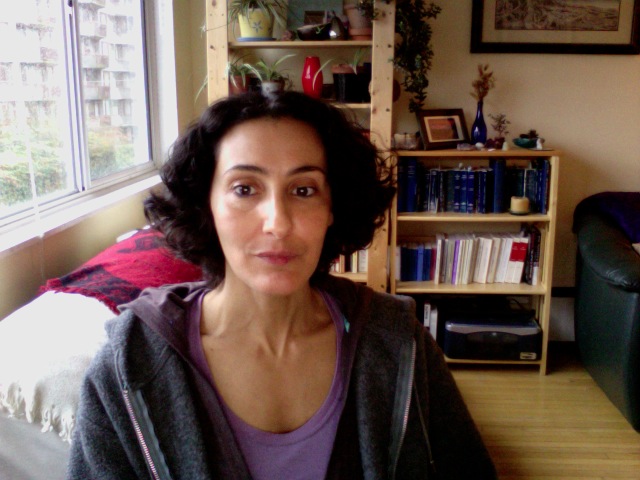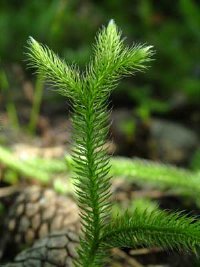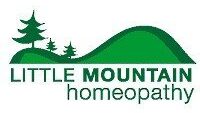
Adult and childhood eczema and psoriasis can be treated effectively with classical homeopathy. Because eczema and psoriasis are chronic health conditions, an appointment must be made at the clinic in order for treatment to be effective.
We use homeopathic medicines to treat eczema and psoriasis. Our medicines are administered orally. Topical creams are not used, although creams can be applied as a supplementary measure in order to soothe and moisturize the skin during homeopathic treatment. For eczema cream recommendations, refer to our blog article: “Natural Eczema Creams and Treatments: A Review.” These eczema creams are also useful for psoriasis.
Steroid creams are not recommended during treatment because they only suppress the symptoms without actually getting rid of the problem. Homeopathy treats the root cause of the problem and prevents it from reoccurring. For extreme cases of eczema and psoriasis, steroid creams can safely be used alongside homeopathic treatment.
We do not do allergy testing at this clinic. Most people have sensitivities, not real allergies. Sensitivities to foods and to environmental factors can change, which is why Vega testing is not always accurate. Homeopaths prefer to use homeopathic medicines to strengthen the body so that it is no longer sensitive to allergens. Rather than limiting your life and telling you to avoid the allergen, we strengthen the body so that it can eventually tolerate the allergen.
Little Mountain Homeopathy Client Testimonials

I had severe eczema rashes on the face for 8 years. This impaired my ability to do my job as a teacher to the extent I was considering a career change. I had tried many different therapies: naturopathy, conventional medicine, acupuncture,… including different homeopaths.
Since I took the one treatment prescribed by Sonya, I had inflammation relief and my eczema disappeared! I also had a great follow up during my healing journey. Now my body seems to be doing great elimination work, and I undergo the best and gentlest cleansing that I ever had. I experienced wonderful, sensitive, and compassionate care with definite results.
Sonia Galbi
Vancouver, BC

Several months ago, eczema had randomly developed all over my neck and face. I was tired of suffering from the itch, burning and misery. Although I had never seen a classically-trained homeopath before, I have been using homeopathic products for years. The consultation with Sonya helped me to realize that health issues go far deeper than the issues themselves, but actually point to your emotional and mental well-being. Through our discussions, I came to further see the connection between spirit, mind and the body. Sonya found a suitable remedy and it has helped me immensely. It did take some time to find the right dosage and frequency that worked for my skin as I had some flare-ups in the beginning. My skin is much smoother and clearer now and I feel great.
Rosanne
Vancouver, BC

In January of 2010, I was struggling with deep personal issues as well as health issues. Over the past 5 years, with constant stress and strain, I developed eczema which spread from my forehead over my entire face, I was gaunt and haggard and could barely look at myself in the mirror.
My first appointment with Sonya was at least 2 hours. She listened to my story, gave me the space to cry and talk over my frustrations, yet, continuously brought me back to focusing on the underlying emotional patterns that were emerging.
The remedy she chose for me was effective. I could feel the emotional patterns surfacing and then being released. Getting the dosage just right took some time. My skin would flare up and then calm down. Sonya followed up regularly on the phone, she worked with me to find the right dosage and frequency, encouraged me to continue with other healing modalities, and gave me great support to move through my challenges.
Six months later the skin on my face is almost clear, my emotional patterns have calmed. I had to make major changes in my life, and the results have been wonderful.
Thanks Sonya for all your caring help and professionalism on my journey.
Alannah Jantzen
Sunshine Coast, BC
Scientific Studies
Patients with psoriasis commonly opt for homeopathic treatment. However, no study has assessed the response to homeopathic treatment by using standardized disease-specific scales, and the findings are based on clinical assessments only. The objective of this study was to evaluate the response to the individualized homeopathic treatment of psoriasis with respect to changes in disease severity and quality of life based on Psoriasis Area and Severity Index (PASI) and Psoriasis Disability Index (PDI) scales, respectively. A multicentric study was conducted using a pragmatic model. The study participants were regularly followed up for 1 year. Subsequently, participants completing the 1-year follow-up were included in a long-term assessment for further 2 years. Three monthly assessments were made by using PASI, PDI, and Visual Analog scales for patient and physician general assessment. Data were analyzed to identify treatment effects and variables affecting treatment. In total, 384 patients were enrolled, out of whom 254 participants completed 1 year of treatment. Of these, 84 participants continued treatment for an additional 12 months. A significant reduction was observed in the scores of PASI (10.96 ± 10.67 at baseline to 4.24 ± 5.10 at 12 months, p = 0.000), PDI (10.19 ± 9.11 to 3.91 ± 4.44, p = 0.000), and patient and physician global assessment scales. Regarding PASI response at 12 and 24 months, PASI 75–89 was reported in 66 and 14 participants, whereas PASI 90–100 was reported in 29 and 17 participants, respectively. Baseline severity of psoriasis considerably affected treatment response, whereas age, gender, and duration of psoriasis did not. Furthermore, the severity of psoriasis and quality of life improved considerably with regular homeopathic treatment.
This was a prospective, multi-centre, parallel-group, comparative cohort study was conducted in urban and mixed urban—rural regions of Germany. 118 children suffering from clinically defined eczema seen at 54 homeopathic practices and 64 conventional medical practices were treated for the condition with the respective therapeutic protocols normally used in these clinics, i.e. individualised homeopathic or conventional medical therapy. Treatment occurred over a period of 12 months and the outcomes of the 2 different methods of therapy were assessed at 6 months and 12 months by the children or their parents on the basis of eczema signs and symptoms and the quality of life. Overall, on the basis of clinical symptoms and quality of life, there was little difference in the response rates of both groups to their respective therapies although at 12 months after starting treatment, those children who were treated homeopathically had a greater level of recovery from symptoms than those treated with conventional medicine. No adverse reactions were reported for either group
60 people were enrolled in this uncontrolled trial which was carried out in Obitsu Sankei Hospital in Kawagoe which was designed to determine the effect of individualised homeopathic medicines on several common skin disorders. These disorders included atopic dermatitis, eczema, acne, urticaria, psoriasis and alopecia universalis. Treatment occurred over a period of 3 months to 2 years and 7 months and subjects were permitted to use conventional dermatological treatments while taking part in the trial. Using the trial participants’ own assessment, improvement or otherwise was assessed using a nine-point scale similar to the Glasgow Homeopathic Hospital Outcome Scale. On this basis, 6 people reported a complete recovery, 23 reported a 75% improvement, 24 found a 50% improvement and 7 had a 25% improvement). In all, 88.3% of patients reported over 50% improvement.
Introduction: Homeopathy is practised in many regions of the world, especially in high-income countries where it ranks the most popular among traditional, complementary, or alternative medicines. One out of 5 children in a German homeopathic physicians’ practice suffered from atopic eczema. Meta-analyses of placebo-controlled studies including only diagnoses other than AE have shown inconsistent results. The only randomized placebo-controlled study on AE was stopped due to recruitment problems and drop-outs. In a prospective observational study we investigated the treatment and possible effects in 3981 consecutive patients (1130 children and 2851 adults) who consulted a physician for classical homeopathic therapy. This paper presents the subgroup of children with AE , followed up for 24 months.
Results: We included 225 children in this intention-to-treat analysis with a disease duration of AE of 3.6 ± 3.8 years. On average the last homeopathic medication was documented after 11.8 ± 10.1 months; however, the majority of patients (69%) continued homeopathic care at the end of the study. Over the course of the study patients received 7.3± 6.4 homeopathic prescriptions, most frequently Calcium carbonicum (8.2%), Tuberculinum (7.2%), and Medorrhinum(6.8%). In total, 137 different homeopathic remedies were used. The strongest improvement in diagnoses and medical complaints was seen in the first 3 months, and it continued during the full observation period. Physicians’ severity assessments tended to be more positive than patients’ assessments, still all changes since baseline were of large effect size (Cohen’s d 1.76–2.56). After 24 months, the AE as well as the other baseline diagnoses were considerably relieved, while reductions in use of conventional medicines were observed.
Discussion: The patients with AE in our study suffered from long-term disease. The severity of disease and quality of life improved substantially and the uses of conventional medication and health services decreased markedly. The methodological strengths of our study include consecutive patient enrolment, high follow-up rates, and the participation of about 1% of all certified homeopathic physicians in Germany. In contrast to randomized trials, our study describes patients from everyday practice with multiple morbidities and a wide range of lifestyles. This ensures a high degree of external validity that allows extrapolation to usual medical care. Our study was designed to evaluate homeopathic treatment in patients with various diagnoses that disallowed the use of disease-specific measurement instruments. The effect size of the severity ratings after 12 and 24 months was large. This may be explained mainly by unspecific effects, natural course of disease or regression to the mean, which our study was not designed to control (effect sizes in between-group comparisons are usually smaller). Our study does not support conclusions as to the effectiveness of the homeopathic remedies, because no methodology for this purpose (control group, randomization, blinding) was built into its design and patients could use additional conventional therapies. The aim of this study was to provide systematic and detailed information about status and effects of homeopathic medical care in usual care. These data could also be helpful in the planning of further research projects on homeopathy, which could include specific instruments, such as SCORAD (SCORing Atopic Dermatitis) and control groups. The reduction in conventional medication also may not be due to the homeopathic remedies alone. Homeopathic physicians are known to use conventional means with a certain hesitation, thus functioning as a kind of “gatekeeper”.
Abstract
Design: Prospective multicentre observational study.
Objective :To evaluate details and effects of homeopathic treatment in patients with psoriasis in usual medical care. Methods Primary care patients were evaluated over 2 years using standardized questionnaires, recording diagnoses and complaints severity, health-related quality of life (QoL), medical history, consultations, all treatments, and use of other health services.
Results: Forty-five physicians treated 82 adults, 51.2% women, aged 41.6 +/- 12.2 (mean +/- SD) years. Patients had psoriasis for 14.7 +/- 11.9 years; 96.3% had been treated before. Initial case taking took 127 +/- 47 min. The 7.4 +/- 7.4 subsequent consultations (duration: 19.4 +/- 10.5 min) cumulated to 169.0 +/- 138.8 min. Patients received 6.0 +/- 4.9 homeopathic prescriptions. Diagnoses and complaints severity improved markedly with large effect sizes (Cohen’s d= 1.02-2.09). In addition, QoL improved (SF-36 physical component score d = 0.26, mental component score d = 0.49), while conventional treatment and health service use were considerably reduced. Conclusions: Under classical homeopathic treatment, patients with psoriasis improved in symptoms and QoL.
Eczema Case Reports by Robert J. Signore, DO
Patient 1
A 56-year-old woman presented with irritant contact eczema of the bilateral fingertips of 5 years’ duration. The patient reported painful fissures that were controlled but not completely cleared with potent topical steroids, including triamcinolone acetonide cream 0.1%, halcinonide cream 0.1%, and halcinonide ointment 0.1%. Her medical history also was remarkable for constipation; hard stool; knee pain when walking up stairs; headaches from hot weather; and feelings of anxiety, sadness, and guilt. With consideration of these clinical signs and symptoms, topical steroids were stopped and the patient began a homeopathic treatment of sodium chloride 200 centesimal (2 pellets orally) every other day for 4 weeks. The patient was allowed to continue use of an over-the-counter emollient (Lubriderm, Johnson & Johnson Consumer Companies, Inc). At week 4, treatment was reduced to sodium chloride 200 centesimal (2 pellets each week). During the first week of homeopathic treatment, the patient reported worsening of the eczema on her fingertips; however, at 4 weeks, her irritant contact eczema was completely clear . Notably, the patient also reported that her stool was softer and her knees no longer hurt when walking up stairs. She also reported feeling calmer with less guilt; however, her headaches persisted throughout treatment.
Patient 2
A 42-year-old woman presented with irritant contact dermatitis of 4 years’ duration that appeared on her hands each winter. She experienced deep painful fissures and marked xerosis that did not respond to treatment with bland emollients or topical preparations of polymyxin B sulfate, bacitracin, and neomycin. The patient began a homeopathic treatment of petroleum 30 centesimal (2 mL orally) 3 times daily. She was allowed to use bland emollients, but no topical steroids were administered. After 9 days of treatment, the deep fissures had almost completely reepithelialized, and after 1 month of treatment, she experienced complete healing of her eczema .
Patient 3
A 49-year-old woman presented with irritant contact dermatitis of 9 years’ duration that appeared on her hands each winter. The patient initially was started on a homeopathic treatment of sulfur 200 centesimal (2 pellets orally) daily, which cleared approximately 90% of her eczema; however, it recurred shortly after the remedy was discontinued. The patient was then switched to a treatment of staphysagria 30 centesimal (2 pellets orally) twice daily. No topical steroids were administered before or after treatment. After 3 days of treatment, the patient’s eczema resolved. Although homeopathic staphysagria typically is thought to be effective in treating suppressed anger, the patient’s mood became transiently angry and irritable shortly after beginning treatment; after finishing the treatment (treated with staphysagria for 3 days), the patient’s anger abated and she felt much happier.
Patient 4
A 21-year-old male college student presented with eczema of the right upper and lower eyelids and right periorbital skin of 9 months’ duration. His medical history was remarkable for childhood asthma and wheezing upon exposure to dogs and cats. The patient also experienced several sleep interruptions each night and often felt tired after lunch. A potassium hydroxide preparation of the right eyelid area was negative for fungal hyphae, and a 28-allergen, thin-layer, rapid-use epicutaneous test (T.R.U.E. Test, Allerderm) was negative at 48 and 96 hours. The patient was started on a homeopathic treatment of phosphorus 30 centesimal (2 pellets orally) each morning and 1 teaspoon orally twice during the day. At 3 weeks, the potency was increased to phosphorus 200 centesimal (2 pellets orally) each morning and 1 teaspoon orally twice during the day. At 7 weeks, phosphorus 1000 centesimal was begun. At 11 weeks, the right eyelid eczema was approximately 90% improved. The patient did not utilize topical steroids before or during the treatment period. Interestingly, the patient noticed that he did not experience any wheezing upon spending a weekend at a friend’s house with a golden retriever, which normally would have caused an allergic reaction. He also noted that his nightly sleep had improved, with only 1 awakening per night. Also, he was not as tired in the afternoon. The patient then left to return to college.
Patient 5
A 5-year-old boy with widespread atopic eczema since 3 months of age presented for treatment of molluscum contagiosum of the right axilla and right lateral thorax. Eczema on the patient’s arms and trunk were being treated with prednicarbate ointment 0.1% and desonide ointment 0.05%. Topical steroid application was stopped when his eczematous plaques cleared; however, he still experienced widespread xerosis and pruritus. He was started on homeopathic calcium carbonate 30 centesimal (2 pellets orally) twice daily. At 4 weeks, the molluscum lesions had completely resolved, but the plaques on the arms and trunk had flared after topical steroids were stopped. The patient’s father, a pharmacist, noted that his son’s skin was less itchy and he scratched less while being treated with calcium carbonate; therefore, the homeopathic remedy was continued for an additional 4 weeks and the patient remained off topical steroids. At 8 weeks, the eczema was nearly all clear and the molluscum lesions remained resolved.
